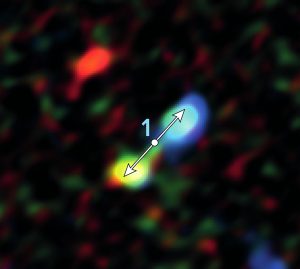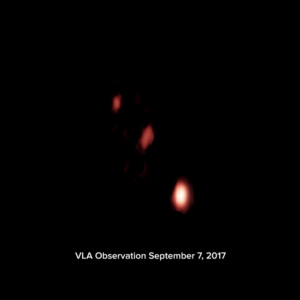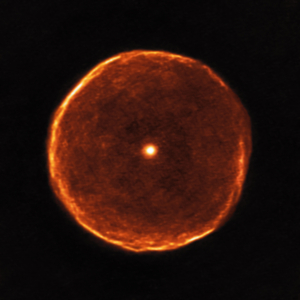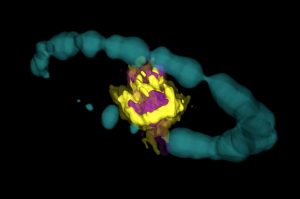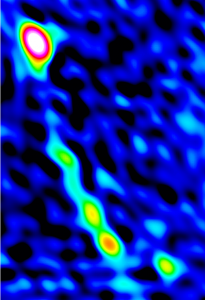VLA observations have pointed to the most likely explanation for the phenomena that followed the violent collision of a pair of neutron stars in a galaxy 130 million light-years from Earth.
ALMA Discovers Infant Stars Surprisingly Near Galaxy’s Supermassive Black Hole
ALMA discovers remarkably early signs of low-mass star formation near the supermassive black hole at the center the Milky Way.
Radio “Eyes” Unlocking Secrets of Neutron-Star Collision
The VLA made the first detection of radio waves coming from the neutron-star collision that generated a ripple of gravitational waves. Radio telescopes will continue to reveal new facts about this phenomenon in the coming months.
Image Release: Aging Star Blows Off Smoky Bubble
Astronomers have used ALMA to image a delicate bubble of expelled material around the exotic red star U Antliae. These observations will help astronomers to better understand how stars evolve during the later stages of their lives.
Heart of an Exploded Star Observed in 3-D
Deep inside the remains of an exploded star lies a twisted knot of newly minted molecules and dust. Using ALMA, astronomers mapped the location of these new molecules to create a high-resolution 3-D image of this “dust factory,” providing new insights into the relationship between a young supernova remnant and its galaxy.
Star’s Birth May Have Triggered Another Star Birth, Astronomers Say
New evidence from the VLA suggests that a jet of material ejected by a young star may have triggered the formation of a second, younger star.







